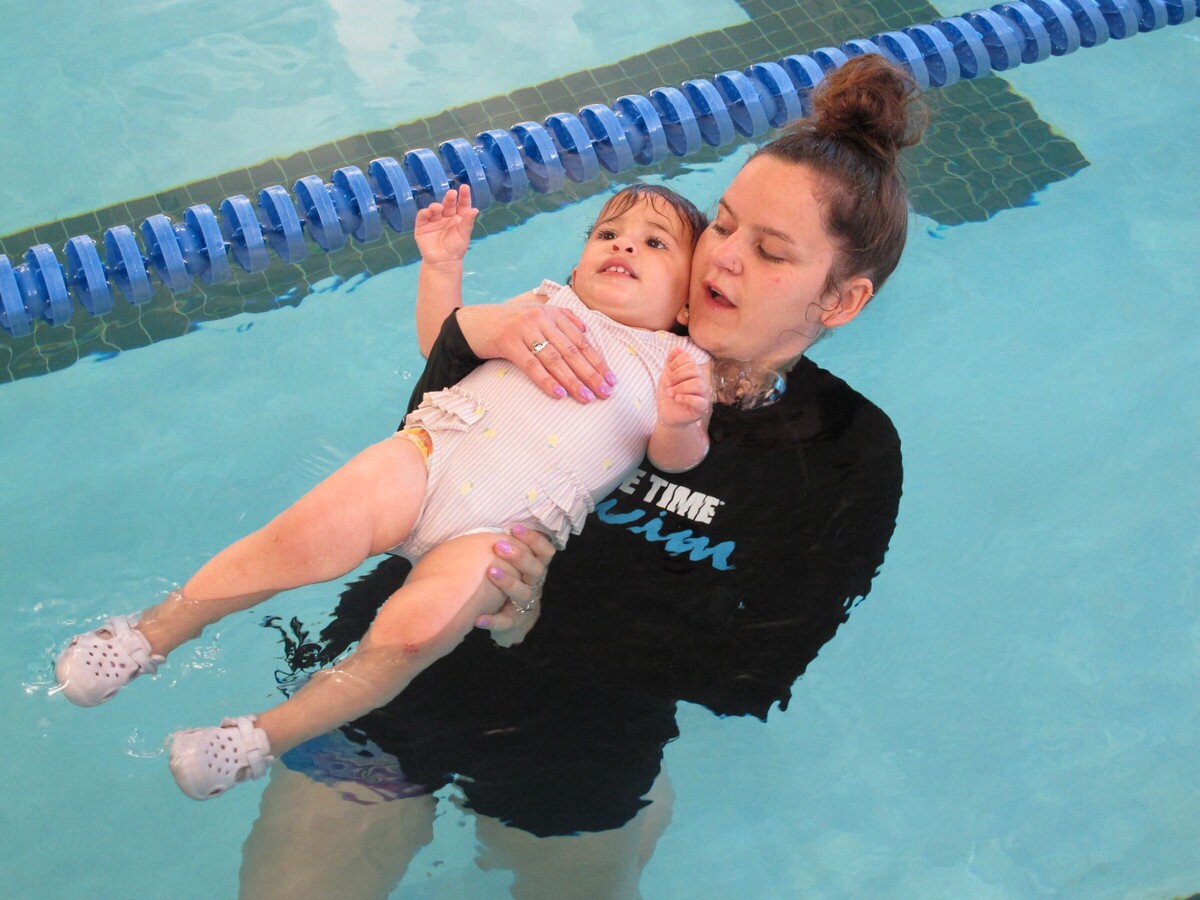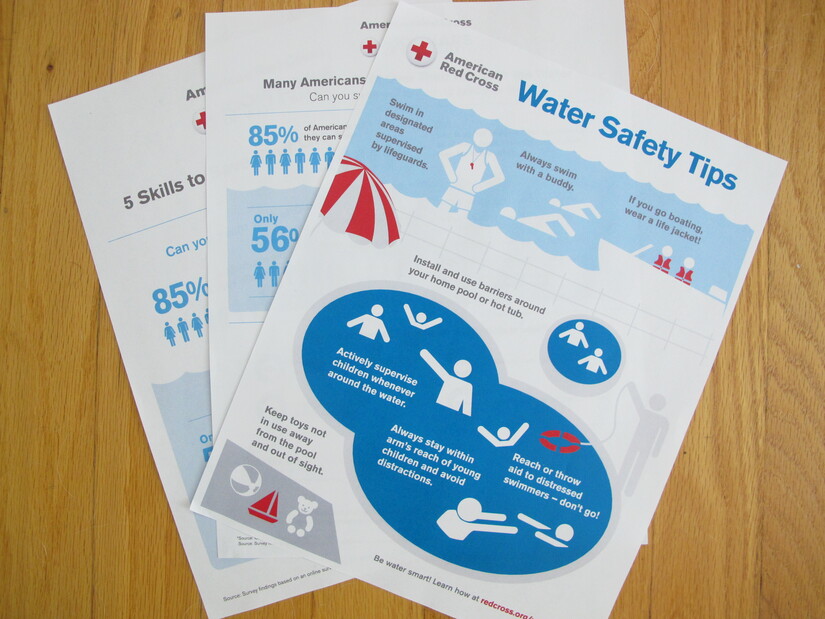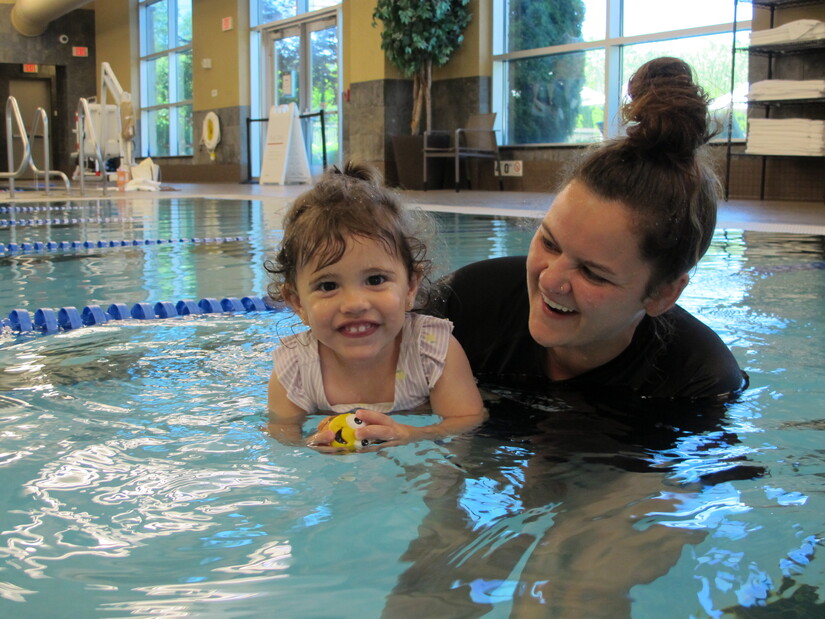Image


By Maddie Mulligan
In the wake of the summer’s first major heatwave and with many hot days on the horizon, people have begun flocking to their local bodies of water to cool off. While seeking these pools and beaches to beat the summer heat is a fun activity for many, it can pose serious risks.
An average of 11 people die in the United States from unintentional drowning every day, according to the American Red Cross. And though many adults cite being able to swim, it is found that only about 56% of Americans can perform all five basic water safety skills: know how to safely submerge yourself into water over your head and return to the surface; float or tread water for one minute; turn around in a full circle and find an exit; swim 25 yards to the exit without stopping; exit from the water (without using a ladder, if in a pool).
 Photo by Westwood Minute/Maddie Mulligan. These handouts of water safety tips are available from Westwood Recreation.
Photo by Westwood Minute/Maddie Mulligan. These handouts of water safety tips are available from Westwood Recreation.To combat drowning rates and water-related injuries that only increase as the weather reaches its peak temperatures, many of Westwood’s own places to cool off are spreading water safety tips for the summer months.
Allie Thomas, Membership Concierge Manager at Life Time fitness club and advocate for water safety, says the biggest tip is to limit distractions for those watching the water.
“Being on a phone, being around the pool, we all have a responsibility to just make sure kids are safe, and not just kids, but everybody is at risk,” said Thomas.
Though it’s easy to think that only kids must be supervised, Thomas emphasized that everybody must be watched to prevent any sort of emergency in the water. With the increased heat, medical emergencies like cardiac arrest are at higher risk of happening and could be fatal when swimming. Catching early signs of emergencies is crucial, and watching every person in the water is necessary for making sure safety is secured.
Ensuring there is always an undistracted “Water Watcher” is a tip shared by Holly Der Kinderen, Aquatics Manager for the Town of Westwood Recreation Department. Making sure not to drink, text, read, or be preoccupied in any way is critical for any adult supervising their kids in the water.
“No one's ever swimming alone. Designated areas that you're swimming in, you're actively supervising the children, staying in arms reach of kids, avoiding distractions,” said Der Kinderen about the job of swim instructing and lifeguarding.
For Der Kinderen, water safety lies in being trained. Sharing how the Red Cross has free online classes and orientations that anyone can access to learn more about water safety, Der Kinderen emphasized that swimming in a place supervised by those who are trained—and especially in lifeguarded areas—is essential.
 Photo by Westwood Minute/Maddie Mulligan. Water safety tips for children include learning the habit of asking an adult for permission to enter the water and taking breaks to avoid exhaustion.
Photo by Westwood Minute/Maddie Mulligan. Water safety tips for children include learning the habit of asking an adult for permission to enter the water and taking breaks to avoid exhaustion.Being able to call medical services, do rescue breathing, or do CPR are a few of the significant skills Der Kinderen advocates that lifeguards as well as adults supervising the water must know. Getting trained in those areas is important for acting in an emergency, said Der Kinderen.
In the end, what Der Kinderen and Thomas stress is developing a routine with kids to make sure they are always being safe around the water. The biggest tip: asking for permission.
Even though they might not understand it, it’s important to teach young kids to ask before entering any sort of body of water, according to Thomas. Developing this habit ensures that the adult is taking responsibility in watching their kid while the kid knows that they can never go into the water without being supervised.
Going past just entering the water, establishing breaks from swimming is also crucial for preventing heat exhaustion. Taking safety breaks to apply more sunscreen, hydrate, and get out of the sun gets ahead of the fatigue from swimming for hours in the summer heat. This exhaustion can become dangerous as kids remain in the water, so enforcing breaks is something Thomas and Der Kinderen say should be a part of any water outing.
As a final, straightforward tip, both Thomas and Der Kinderen underscore the importance of swim lessons for children. Starting kids up at just a few months old can teach them the necessary survival skills that is swimming, something as simple as being able to flip over being a life-saving difference.
“It's really just that early intervention with teaching that skill of swimming because, yes, it's fun, but it's also going to prevent something from happening later on,” said Thomas.
With the summer only having just begun and the temperatures already skyrocketing, pools and beaches are only going to become all the more popular for people looking to cool off. Ensuring that water safety is learned and recognized will make sure that everyone can enjoy the water this summer.
“Everything you're doing is to empower a safe summer for you and your family,” said Der Kinderen.
Thanks to Maddie Mulligan, student at Boston College, and head editor for the arts section of The Heights, an independent, student-run newspaper, for contributing this article to Westwood Minute. Ms. Mulligan is interning with Westwood Minute for the summer.